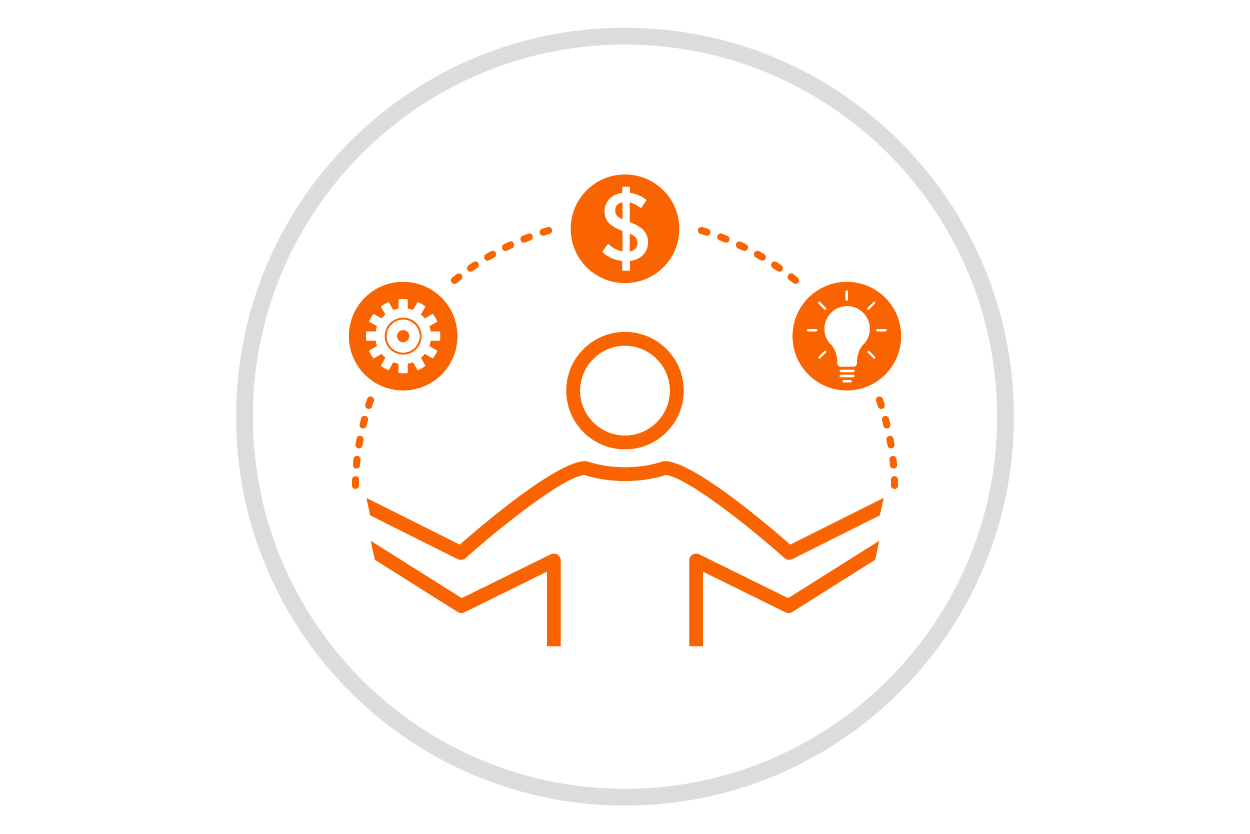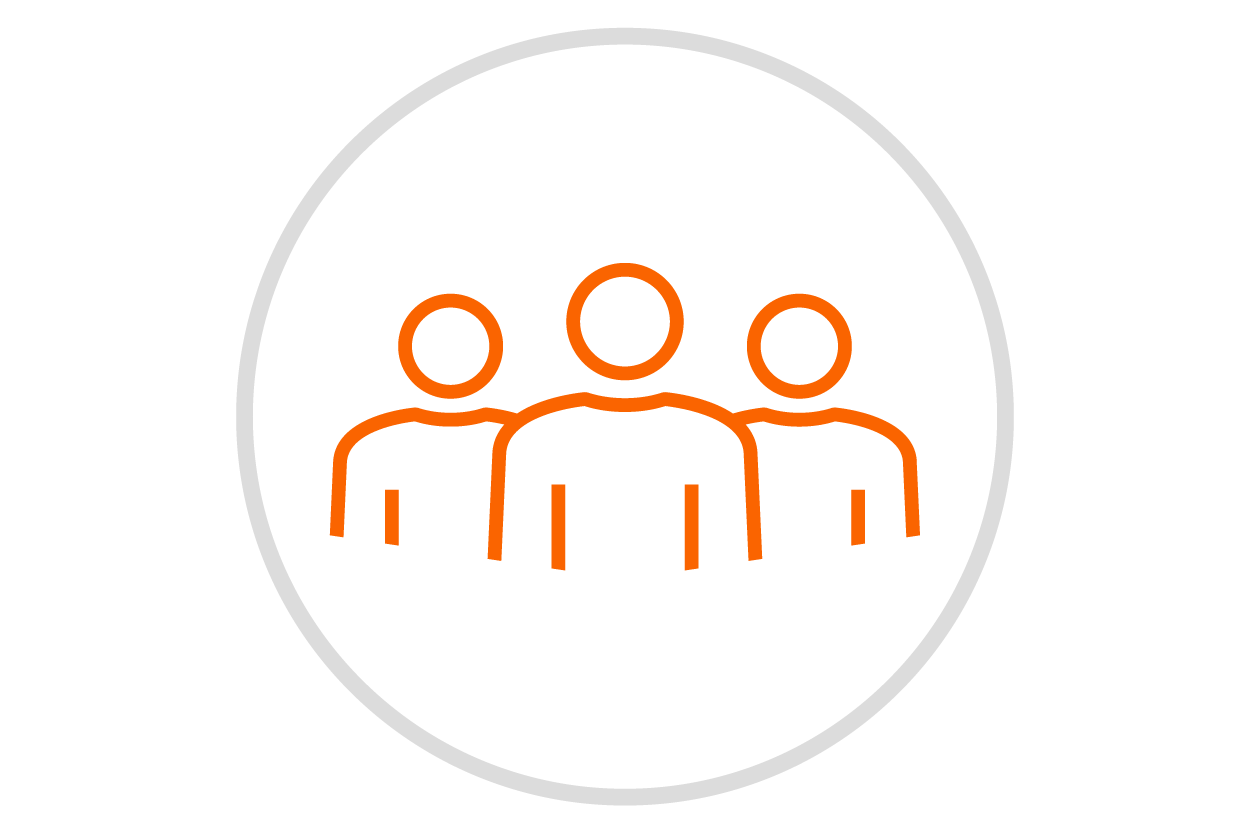Ideal Graduate Learning Outcomes Matrix

Professional Preparedness
Professionally prepared graduates will demonstrate career readiness by embodying a diligent work ethic and effectively implementing their experiences of collaboration, problem solving, and communication. Graduates will embrace agile learning for lifelong career development in an ever-expanding diverse and global workplace.
How?
Works effectively as a member of a team
- Remembering and Understanding- Recognize what effective teamwork looks like
- Applying- Contribute in a meaningful way to a team effort
- Analyzing & Evaluating- Examine how diverse skill sets contribute to concerted efforts
- Creating- Assemble an effective team based on individual skill sets
Solves problems through critical thinking
- Remembering and Understanding- Identify key pieces of information in a situation
- Applying- Demonstrate applying knowledge to a new context
- Analyzing & Evaluating- Evaluate information and assimilate into decision making
- Creating- Show the results of reasoning and present sound arguments
Communicates effectively in writing and verbally
- Remembering and Understanding- Recognize effective communication
- Applying- Use messages appropriate to the audience, purpose, and context
- Analyzing & Evaluating- Interpret meaning through active listening
- Creating- Illustrate self-efficacy through communication
Gets things done through a diligent work ethic
- Remembering and Understanding- Explain the value of strong work ethic
- Applying- Practice a standard of conduct for activity performance
- Analyzing & Evaluating- Prioritize tasks to accomplish goal
- Creating- Show results of diligent work ethic
Personal Responsibility
Personally responsible graduates will demonstrate the ability to navigate challenging situations, display an understanding of personal and career-relevant finance, strive to expand knowledge base, and/or express resilience in problem-solving.
How?
Exhibits tenacity, adaptability, and persistence
- Remembering and Understanding- Describe tenacity, adaptability, and persistence
- Applying- Demonstrates tenacity, adaptability, or persistence
- Analyzing & Evaluating- Seek constructive feedback
- Creating- Improve personal growth through reflection and feedback
Demonstrates financial literacy
- Remembering and Understanding- Identify financial literacy concepts
- Applying- Apply financial literacy concepts
- Analyzing & Evaluating- Determine clear financial goals
- Creating- Create and follow a budget
Carries a commitment to continuous learning
- Remembering and Understanding- Explain the importance of continuous learning and its impact on personal and professional growth
- Applying- Seek a variety of learning opportunities both inside and outside of the classroom
- Analyzing & Evaluating- Choose to apply newly acquired knowledge and skills
- Creating- Cultivate a growth mindset, embracing challenges and setbacks as opportunities for learning and improvement
Handles ambiguity with dexterity and creativity
- Remembering and Understanding- Recognize situations and problems that lack clear definitions or solutions, acknowledging the presence of ambiguity
- Applying- Generate innovative and original solutions to ambiguous or complex problems
- Analyzing & Evaluating- Demonstrate the capacity to make informed and timely decisions, even when faced with incomplete information or uncertain outcomes
- Creating- Act decidedly in settings characterized by uncertainty, leveraging ambiguity as an opportunity for growth, adaptability, and creative thinking
Engaged Citizenship
An engaged citizen, through respectful discourse, will take an active role in civic life, pursuing meaningful service to enhance local communities and society at large. An engaged citizen advocates for policies through actions, which positively affects communities, by embracing differences and new ideas as a lifelong learner.
How?
Welcomes and includes global citizenship
- Remembering and Understanding- Recognize the value of embracing differing ideas and viewpoints
- Applying- Practice embracing differing ideas and viewpoints
- Analyzing & Evaluating- Analyze different viewpoints without bias.
- Creating- Create an welcoming and safe environment for everyone
Respects and esteems the value of dignity and healthy discourse
- Remembering and Understanding- Observe various viewpoints of different communities
- Applying- Show understanding of worldview beyond their own
- Analyzing & Evaluating- Prioritize understanding by recognizing and observing different perspectives
- Creating- Revise team initiatives prioritizing varied perspectives and experiences
Exercises service to the community
- Remembering and Understanding- Discuss empathetic sensitivity toward all communities
- Applying- Demonstrate academic and professional growth to adapt to diverse workforce
- Analyzing & Evaluating- Evaluate knowledge to determine best practice.
- Creating- Assemble diverse groups to address community issues
Maintains respectful citizen qualities in the digital sphere
- Remembering and Understanding- Recognize the importance of demonstrating respectful citizen qualities in the digital sphere
- Applying- Practice using respectful citizen qualities in the digital sphere
- Analyzing & Evaluating- Prioritize moral judgment to become empathetic and fair-minded leaders
- Creating- Generate protocols for respectful digital engagement
Ethical Leadership
An ethical leader will strive for the highest common good. Ethical leaders diligently reflect on their own experiences and welcome the lived experiences and contexts of others. Ethical leaders inspire and act with care, authenticity, attention to equity, and courage, transparently embracing responsibility for moral decisions, behaviors, and actions. Ethical leadership has an imperative that all must use their influence for the betterment of others without any demand of formal titles or official roles.
How?
Makes decisions with integrity
- Remembering and Understanding- Describe the importance and implications of ethical decision making
- Applying- Practice integrity in decision making by acting with honesty and transparency
- Analyzing & Evaluating- Justify leadership decisions ethically, valuing character and the good of others above oneself
- Creating- Formulate ethical decisions that thoughtfully consider others to lead a group to achieve a common goal
Exercises empathy
- Remembering and Understanding- Summarize the concepts, importance, and skill of leading with empathy
- Applying- Demonstrate leading with empathy by prioritizing seeking to understand others’ perspectives
- Analyzing & Evaluating- Relate by bridging differences and taking an empathetic approach
- Creating- Build a positive and dynamic team environment by leading with empathy
Embraces accountability
- Remembering and Understanding- Explain accountability in leadership and how to respond appropriately to constructive feedback
- Applying- Adapt accordingly based on lessons from failure, feedback, and accountability
- Analyzing & Evaluating- Examine failures or mistakes through honest reflection, seeking feedback and making amends
- Creating- Create structures to solicit feedback of leadership work and respond with humility, transparency, and gratitude for accountability
Demonstrates moral courage
- Remembering and Understanding- Identify personal leadership values and areas in which other people may have differing values or cognitive dissonance
- Applying- Practice making difficult decisions for the common good, even when they are unpopular
- Analyzing & Evaluating- Determine leadership decisions in alignment with one’s values in a way that does not harm, dehumanize, or inhibit others
- Creating- Act based on the highest common good by making difficult leadership decisions


